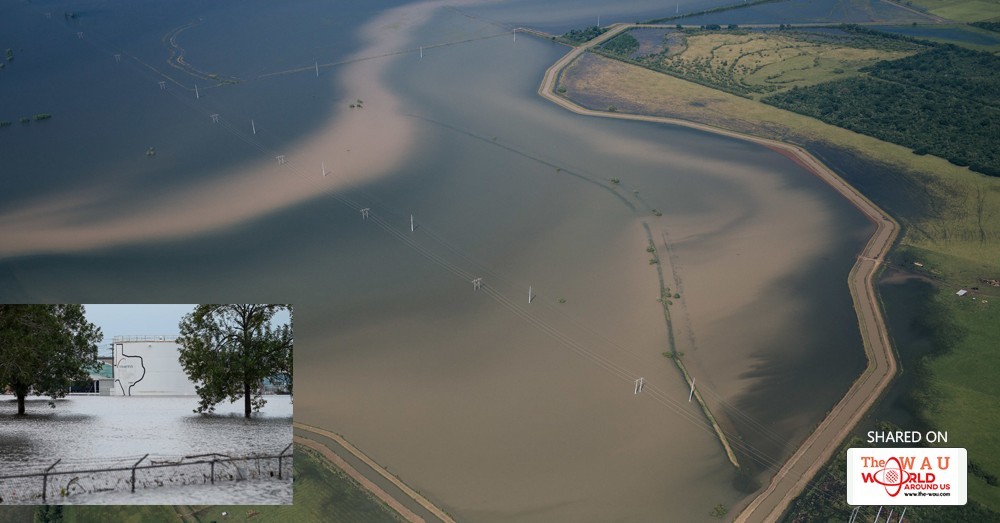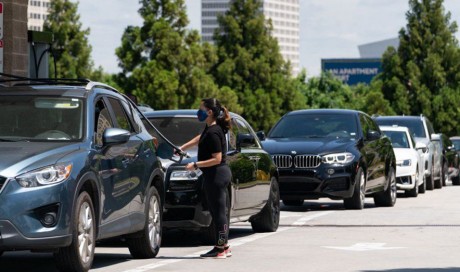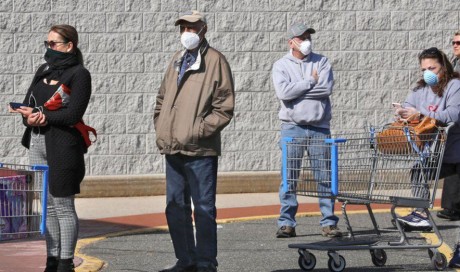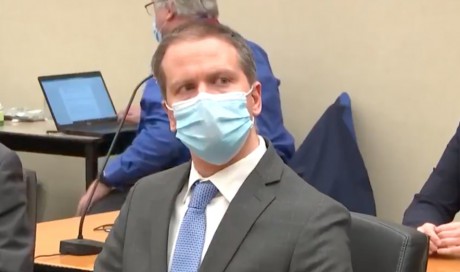With drinking water cut off, its river still rising, and most routes in and out of the city flooded, Beaumont suffered the worst of Texas’ hardships on Thursday, and they showed no sign of abating.
Flooding shut down the pumping plants that supply water to Beaumont in the morning, prompting a hospital to transport its patients out of the city, and trucks carrying bottled water struggled to reach the largely isolated city.
The Neches River surged far beyond its banks, into streets, houses and businesses in the city of almost 120,000 people 70 miles east-northeast of Houston, reaching six feet above the previous record by afternoon, the National Weather Service reported. It was projected to rise another foot by Friday afternoon.
The loss of water was just one of a host of new dangers emerging in the aftermath of Harvey, a storm system that pounded southeast Texas with record rainfall for several days before blowing across Louisiana and into Mississippi. Once a Category 4 hurricane, Harvey has been downgraded to a tropical depression.
A series of small explosions shook a chemical plant about 25 miles northeast of downtown Houston on Thursday and more blasts were expected, after floodwaters shut down the cooling systems that kept the chemicals stable. Twenty-one emergency workers were treated for exposure to the resulting fumes and smoke, which were described as a lung and eye irritant.
It appeared that the health and safety risk from the plant was limited. But in a region dotted with chemical factories, oil refineries and natural gas plants, the explosions at the Arkema plant near Crosby, Tex., underscore the worries that many people have about the lingering dangers that damage from the storm poses to the region’s infrastructure, economy and health.
Houston officials ordered mandatory evacuation of areas around the Barker Reservoir, as flooding from that basin, and the nearby Addicks Reservoir, continued to pour into neighborhoods on the city’s western edge. In other parts of the city, floodwaters receded, exposing countless losses and new hazards, like ruined and abandoned vehicles blocking roads, damaged electrical systems, and mold.
As residents of the region tried to assess the damage and some returned to their homes, weather forecasters had some bad news: More rain is expected early next week.
What went wrong at the chemical plant?
Arkema officials said the site had been without power since Sunday and the water was six feet deep in some areas. Organic peroxides stored there need to be refrigerated or they become unstable. With a storage warehouse warming up, the crew transferred the chemicals to diesel-powered refrigerated trailers.
But the backup generators flooded as well, and the units apparently warmed to the point where the chemicals, which are used in making plastic and other materials, exploded overnight.
The blasts were not expected to affect chemicals in other parts of the plant, said Mr. Rennard, the company official, and the company was able to monitor the status of the containers remotely.
Pence: ‘The American people are with you.’
Vice President Pence and several cabinet officials arrived to a sunny, hot and humid Corpus Christi around midday before heading to nearby Rockport to speak with victims of the storm.
“The American people are with you,” he told a crowd outside a Rockport church that was damaged by the storm. “We are here today, we will be here tomorrow and we will be here every day until this city and this state and this region rebuild bigger and better than ever before.”
About 21,000 federal workers have been mobilized in response to the storm and Congress is expected to debate passage of a multibillion-dollar emergency aid package in the coming weeks.
Mr. Trump, who visited the area earlier in the week, is expected to return to Texas on Saturday.
Beaumont is running out of water, and a hospital is evacuating.
Taps in Beaumont ran dry, and officials there said they could not predict when homes and businesses in the city of almost 120,000 residents would have running water again. The city manager, Kyle Hayes, said at a midday news conference that he would not be able to assess flood damage to the city’s water pumps, or give a timeline for fixing them, until water began to recede, which he said would happen no earlier than Saturday. He added that the city was working on setting up bottled water distribution centers.
The storm dropped 47 inches of rain in the Beaumont-Port Arthur area, and most roads into the cities remain impassable, making relief shipments of bottled water difficult.
The city’s Baptist Beaumont Hospital began to transport most of its 193 patients by ambulance and helicopter to other hospitals outside the area, and to discharge those who could safely go home, said Mary Poole, a hospital spokeswoman.
Christus Southeast Texas-St. Elizabeth Hospital in Beaumont decided not to evacuate, but until the city water supply resumes, it will only admit new patients who need critical or emergency care, officials there said.
The Beaumont Police Department posted pictures of the flooded main pumping station on its Facebook account.
Rick Rojas, a New York Times reporter, is in Beaumont, his hometown. Read more about his journey home here.
Residents are being cautioned to boil water.
State figures showed nearly 150,000 water connections were affected by boil-water notices. Nearly 32,000 of those connections were in Victoria, which has struggled to provide clean water since late last week. Bryan Simons, a spokesman for the county’s emergency operations center, said part of the delay was the state process to recertify the system after concerns about its integrity arose.
“Our community is very understanding,” he said. “They understand the circumstances behind it. They’re sort of just rolling with it at this point.”
Floodwaters remain a problem in Houston.
Parts of Houston began to dry out, exposing daunting expanses of muck, vehicles and waterlogged homes, but other areas of the city remained under water or impassable. Rescues of stranded people continued, though at a much-reduced pace.
Some people tried to go back to homes they had fled, but officials urged caution and patience.
With much of the nation’s oil refining capacity shut down by the storm, a fuel shortage began to be felt across the region, which experts said will continue for weeks. Ken Paxton, the Texas attorney general, warned gas stations not to take advantage of consumers. The attorney general’s office has received more than 500 complaints, including cases in Dallas where customers were charged $6 to $8 per gallon.
Record flooding continued on the Buffalo Bayou in the western suburbs, a surge that will eventually flow downstream through Houston and pose a continued risk to parts of the city. In addition, the Addicks and Barker reservoirs continued to release water into the Buffalo Bayou.
The city advised people to wash their hands after coming into contact with floodwaters, which may carry toxic chemicals and diseases, and warned against eating any food that had come into contact with the water. Some trash collections resumed.
The Houston Independent School District announced that classes would not resume until Sept. 11. Superintendent Richard Carranza said that more than 10 percent of the city’s schools sustained water damage or lost power. The district relaxed its school uniform rules through January. All of the city’s public school students, regardless of family income, will be eligible for three free meals per day for the entire school year.
Port Aransas is trying to get back on its feet.
When Hurricane Harvey made landfall, its winds smashed some things and spared others. Houses were pushed off their foundations, while shacks next door were spared. Big trees stood as small trees toppled.
At Spanky’s Liquor on the main street of Port Aransas, the windows shattered, the walls collapsed. “The roof? It’s about 100 feet that way,” the owner, Tom Hamilton, said as he paused from sweeping up the pieces and pointed toward a house with a boat capsized against the porch and a surfboard lodged in a tree.
But nearly every bottle of liquor was still intact on the shelves now open to the sky.
Like many on the island, Mr. Hamilton and his staff were beginning the long ordeal of loss and recovery. Christy Lambert pulled out her phone to find a photo of her home in Aransas Pass, just across the bay. There was nothing left but a single kitchen wall. Most of her possessions had blown away.
“When I saw it, I cried, I cried for hours,” said Ms. Lambert, who fled the storm and returned on Monday.
Share This Post















